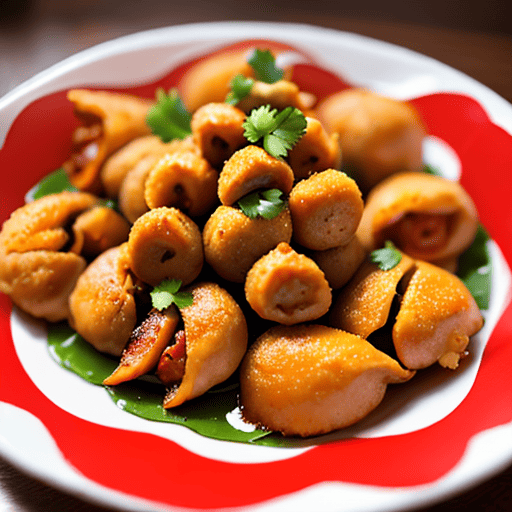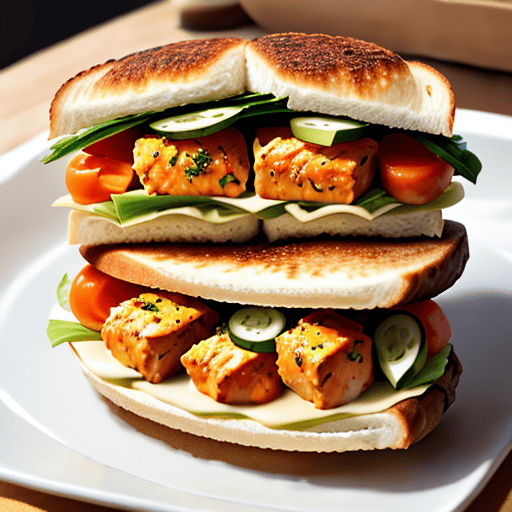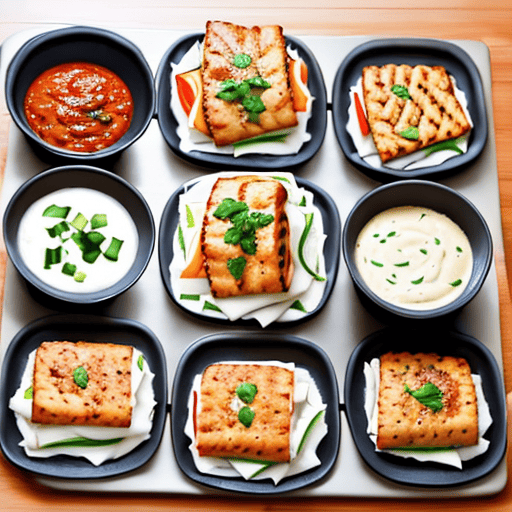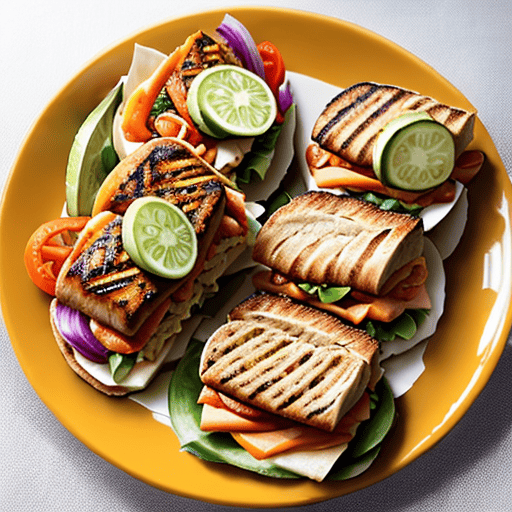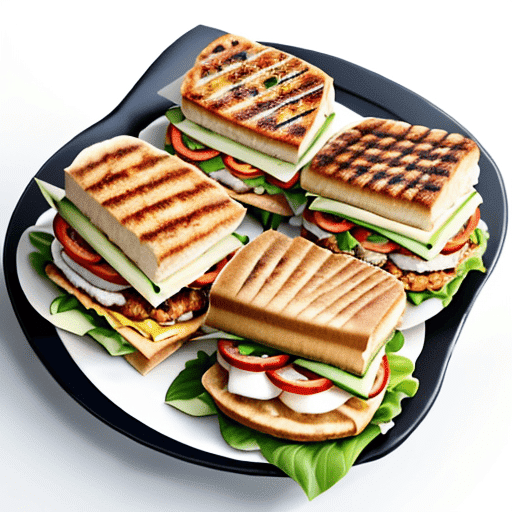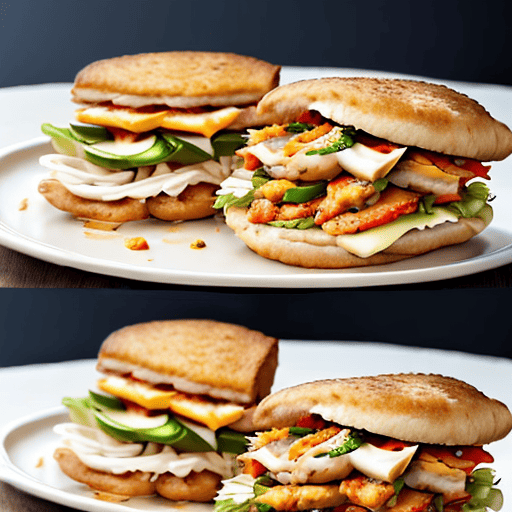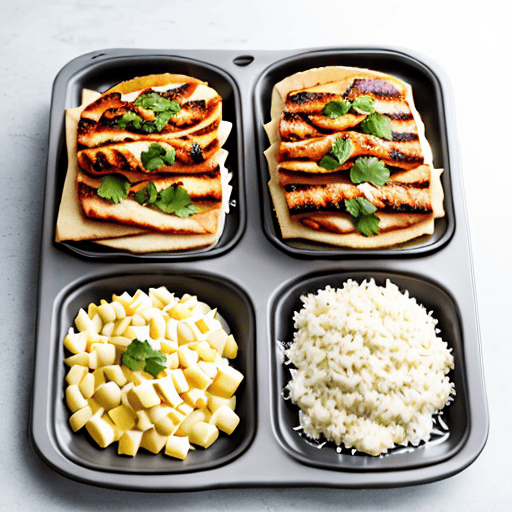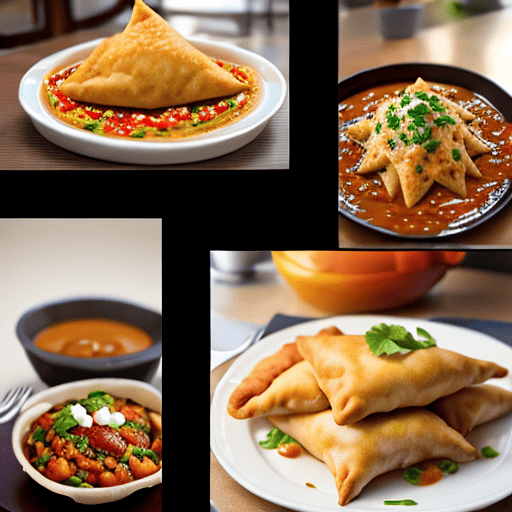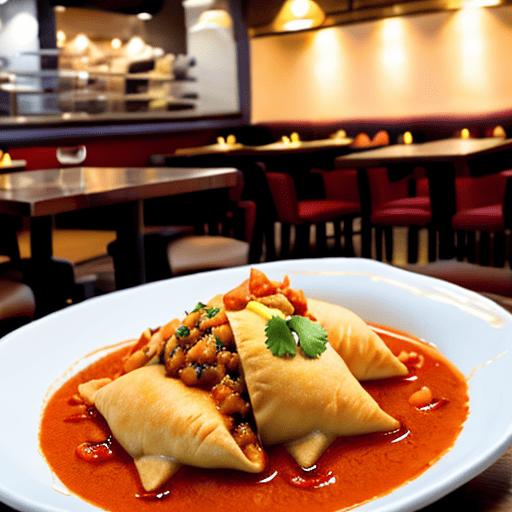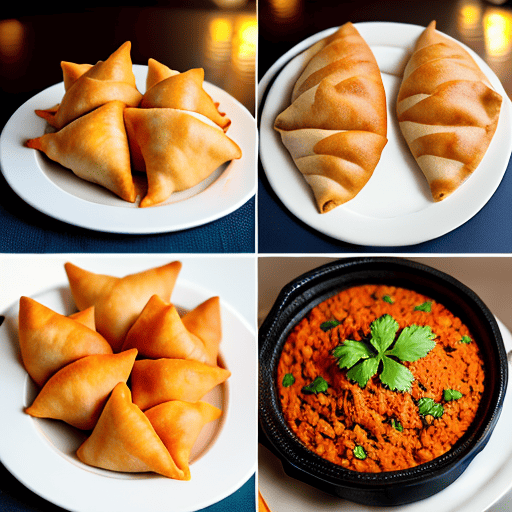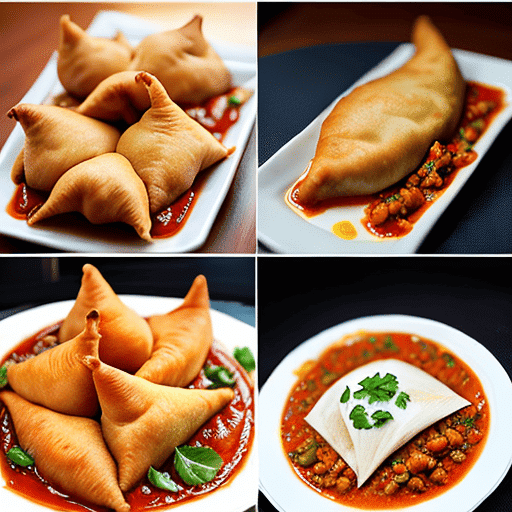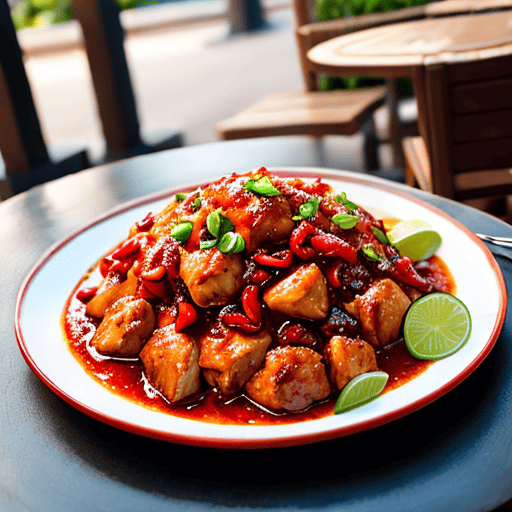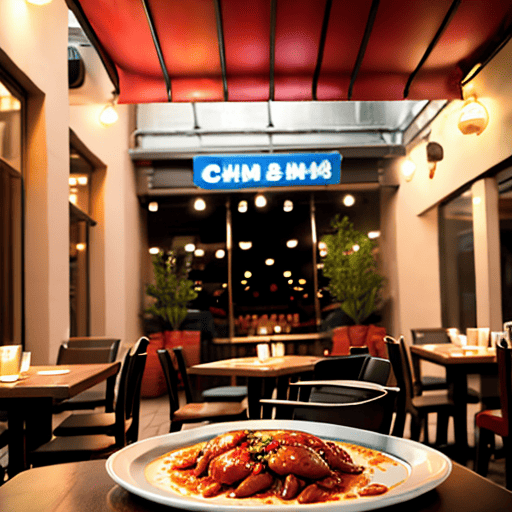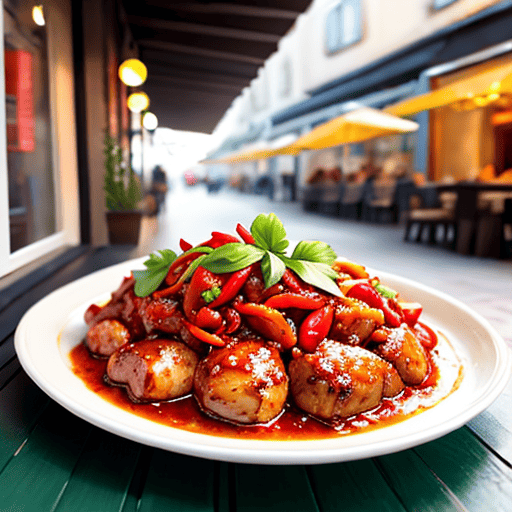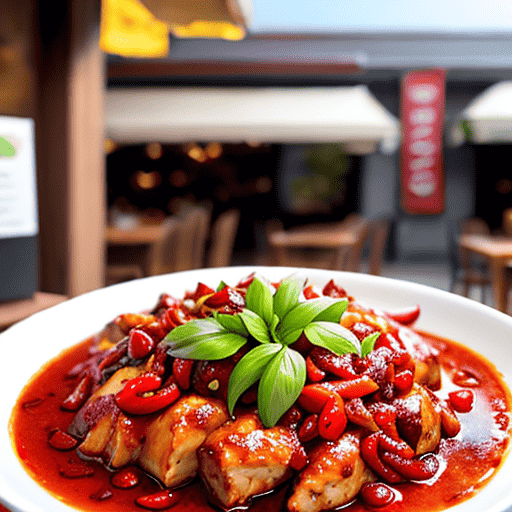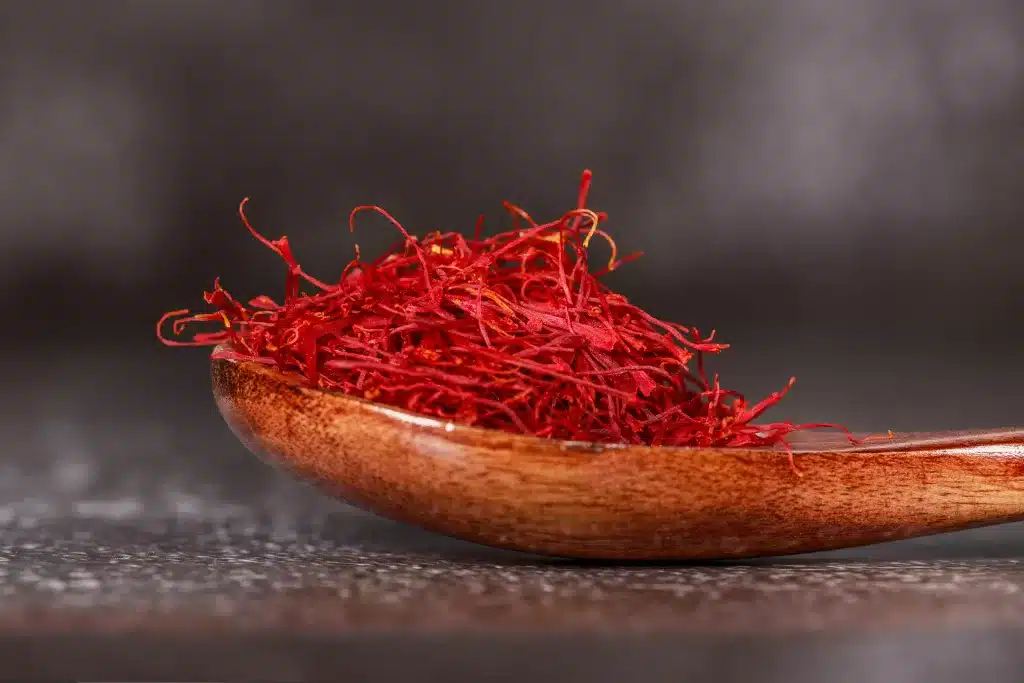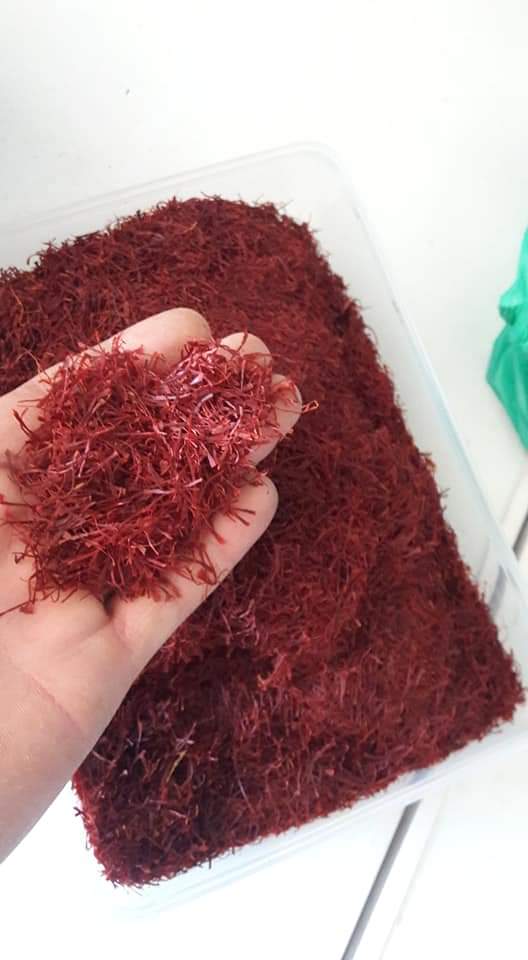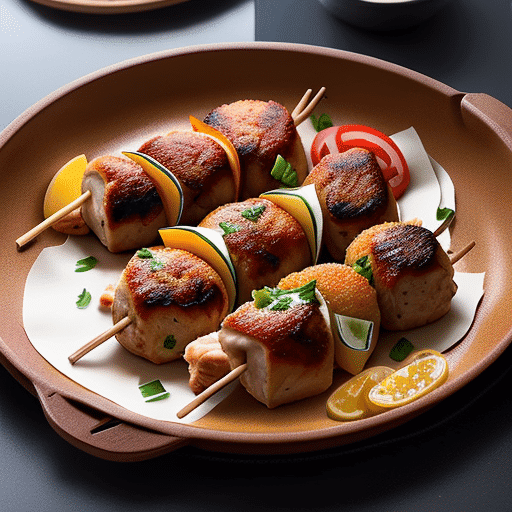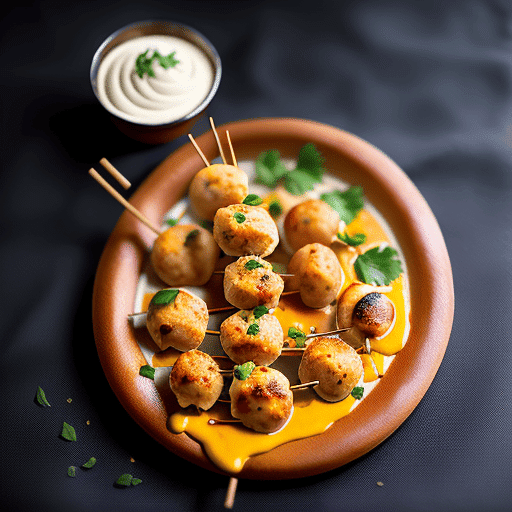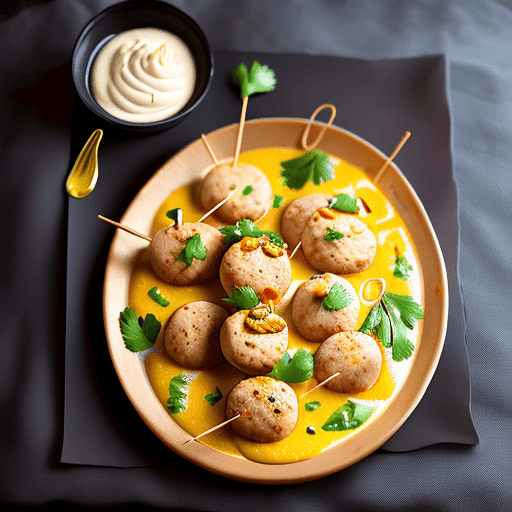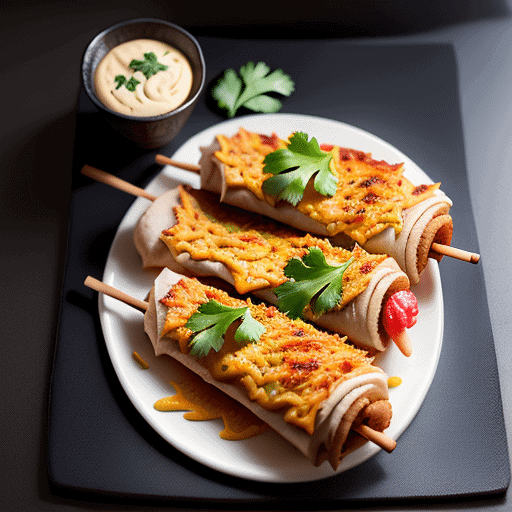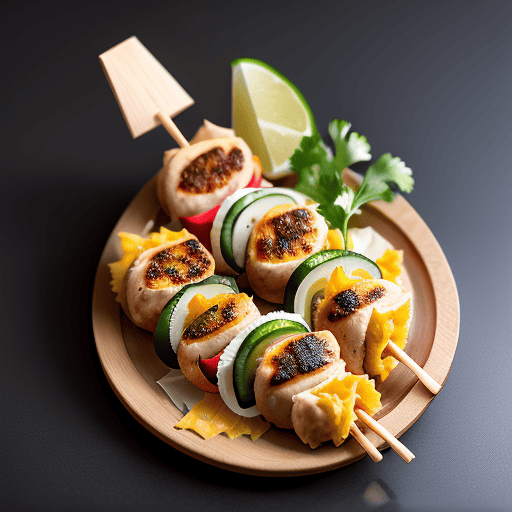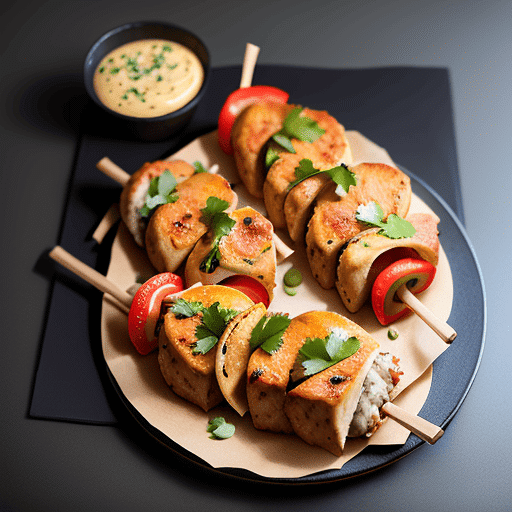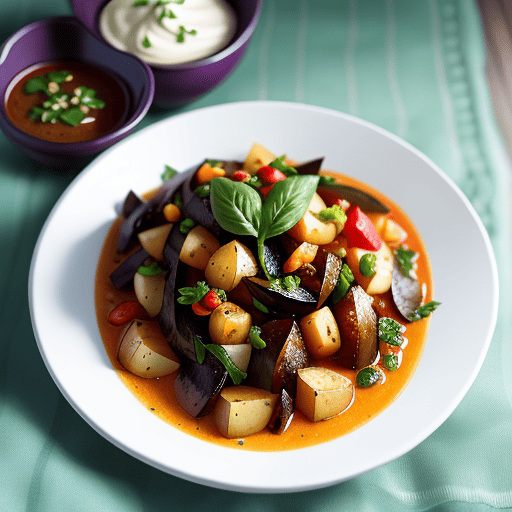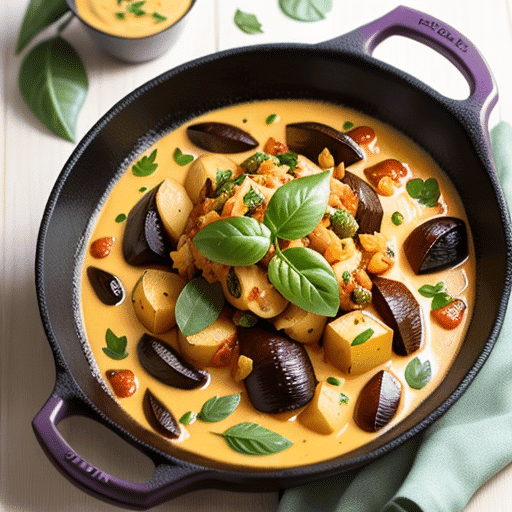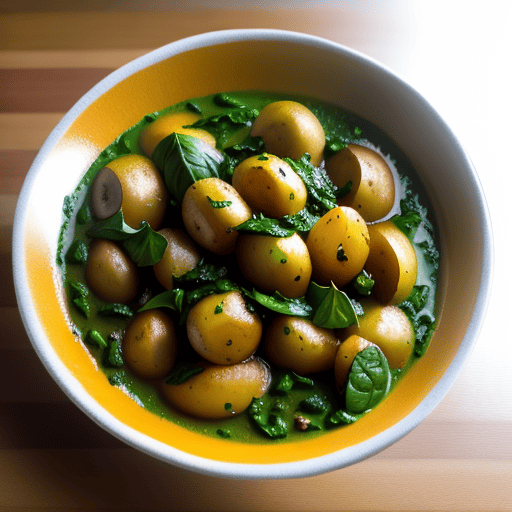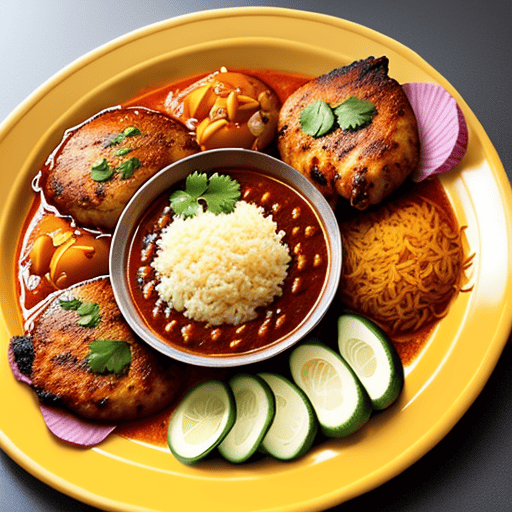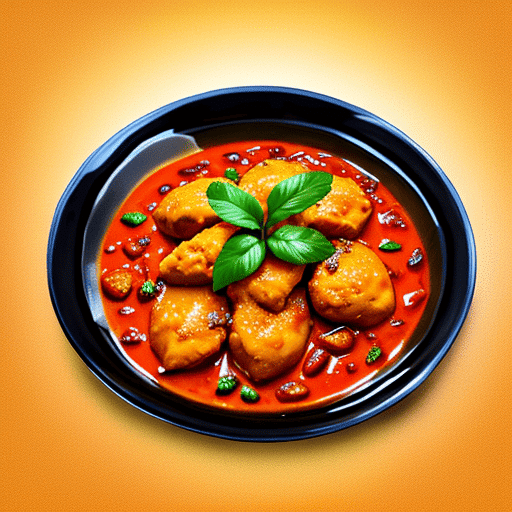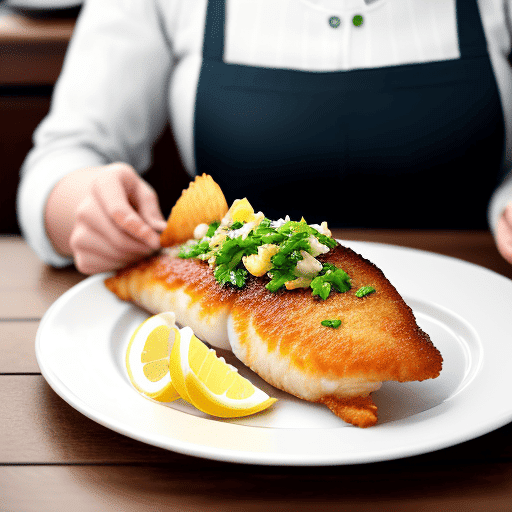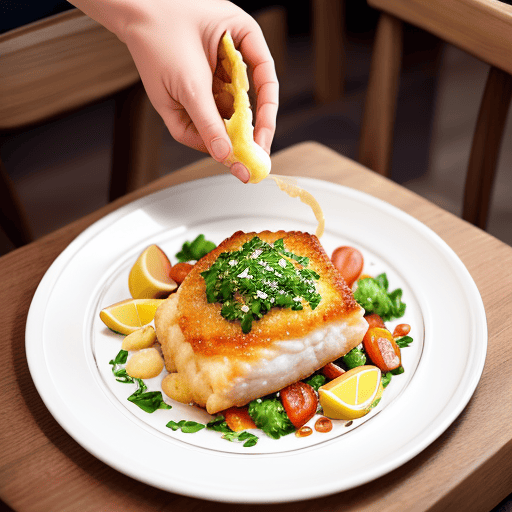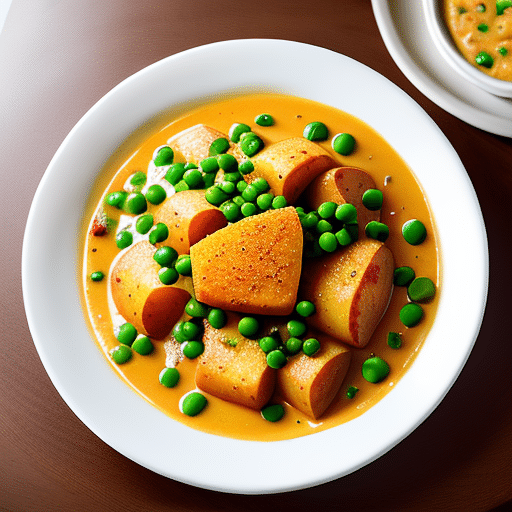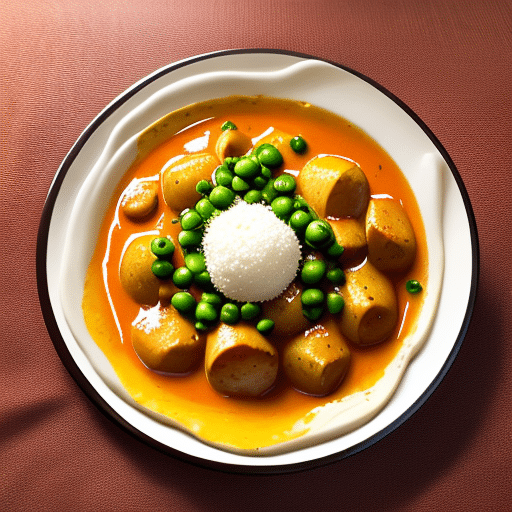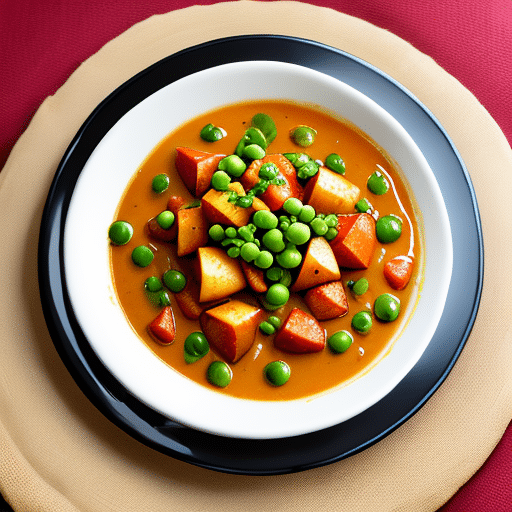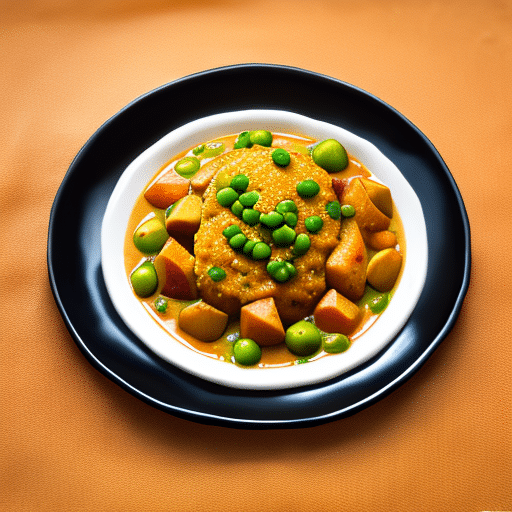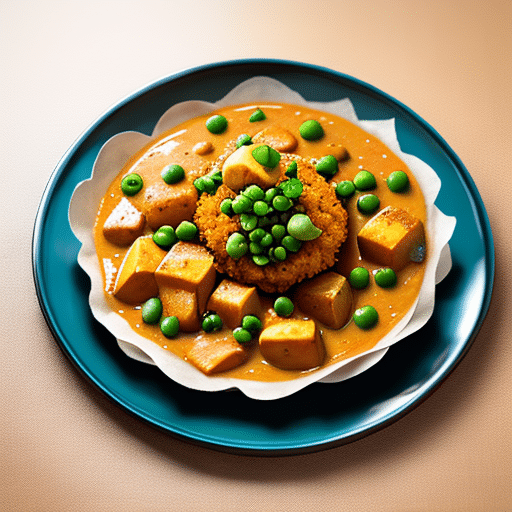Streets to Global Sensation: Chicken Tandoori Momos
Indulge in the delightful world of Chicken Tandoori Momos, a fusion dish that tantalizes your taste buds with a burst of Indian spices and juicy chicken. Learn about the origin, preparation, nutritional value, troubleshooting tips, and popular variations of this mouthwatering delicacy.
Introduction
Welcome to the flavorful journey of Chicken Tandoori Momos, a perfect blend of Indian spices and dumplings. This article will explore the origins, preparation methods, nutritional benefits, troubleshooting tips, and the diverse range of Chicken Tandoori Momos. Get ready to dive into the world of this delectable fusion dish that has won the hearts of food enthusiasts globally.

Chicken Tandoori Momos: A Fusion of Cultures
Chicken Tandoori Momo have emerged as a popular street food item, combining the culinary traditions of India and Tibet. The dish brilliantly marries the classic momo recipe from Tibet with the vibrant flavors of Indian Tandoori spices. Let’s delve deeper into the diverse facets of this mouthwatering delicacy.
The Rich History of Chicken Tandoori Momos
The history of Chicken Tandoori Momos is rooted in the bustling streets of Delhi, India. It is believed that Tibetan immigrants introduced momos to India, and over time, the local chefs added their unique twist to create the Tandoori version. The dish rapidly gained popularity, spreading to various corners of the country and eventually crossing international borders.
Preparation of Chicken Tandoori Momos
The preparation of Chicken Tandoori Momos is an art that requires skill and precision.
“Below, you’ll find a comprehensive step-by-step manual on creating these delightful treats from scratch:”
- Preparing the Dough: The process begins with making the momo dough, a combination of all-purpose flour, water, and a pinch of salt. The dough is skillfully kneaded until it attains a velvety smooth consistency.
- Making the Filling: The filling is the heart of any momo. In the case of Chicken Tandoori Momos, succulent pieces of chicken are marinated in a mixture of yogurt and Tandoori spices to infuse them with rich flavors.
- Rolling the Dough: The momo dough is rolled into thin, circular wrappers, ready to embrace the flavorful chicken filling.
- Folding the Momos: The circular wrappers are then filled with the marinated chicken and folded into beautiful, crescent-shaped dumplings, ensuring that the filling is sealed securely.
- Steaming or Tandoori Cooking: Chicken Tandoori Momos can be prepared in two ways – steaming or tandoori cooking. Steamed momos are a healthier option, while tandoori momos are cooked in a traditional clay oven, giving them a unique smoky flavor.
- Serving with Love: Once cooked to perfection, the momos are served hot with spicy chutneys and sauces, elevating the taste to a whole new level.

The Perfect Blend of Flavors: Chicken Tandoori Momos Variations
The world of Chicken Tandoori Momos offers a plethora of tantalizing variations that cater to different taste preferences. Some popular variations include:
- Paneer Tandoori Momos: For the vegetarians, paneer (cottage cheese) replaces chicken, delivering a burst of creamy flavors.
- Afghani Tandoori Momos: This fusion variation combines Afghan and Indian spices, adding a unique twist to the traditional momo recipe.
- Butter Chicken Tandoori Momos: Indulge in the heavenly combination of butter chicken and tandoori momos, a treat for your taste buds.
- Spinach and Cheese Tandoori Momos: Healthy and delicious, this variation adds a nutritious twist to the classic recipe.
Tips for the Perfect Chicken Tandoori Momos
Achieving the perfect Chicken Tandoori Momos requires finesse and expertise. Here are some tips to help you create this delightful dish at home:
- Marinate the chicken for at least 2 hours to let the Tandoori spices infuse into the meat.
- Use a mixture of mustard oil and butter to baste the momos before tandoori cooking for an authentic flavor.
- Experiment with different fillings and folding styles to create unique momo shapes.
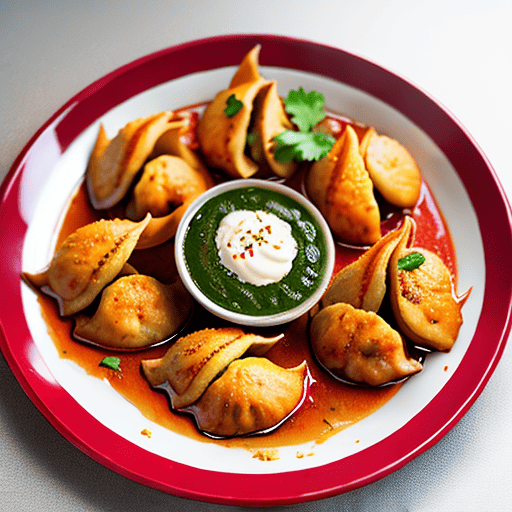
Nutritional Value of Chicken Tandoori Momos
Chicken Tandoori Momos are not only a treat for your taste buds but also offer some nutritional benefits. Here’s a table showcasing the approximate nutritional value of Chicken Tandoori Momos per 100g serving:
| Nutrient | Amount Per 100g |
|---|---|
| Calories | 175 kcal |
| Protein | 11.5 g |
| Carbohydrates | 19.2 g |
| Total Fat | 6.8 g |
| Saturated Fat | 1.8 g |
| Cholesterol | 30 mg |
| Dietary Fiber | 1.2 g |
| Sugars | 1.3 g |
| Sodium | 358 mg |
| Calcium | 32 mg |
| Iron | 2.1 mg |
| Vitamin C | 1.5 mg |
| Vitamin A | 67 IU |
Note: Nutritional values are approximate and may vary based on the recipe and cooking method.
Troubleshooting Tips for Chicken Tandoori Momos
Sometimes, achieving the perfect Chicken Tandoori Momos can be a challenging task. The level of spiciness can be adjusted according to individual preferences
- Dry Momos: If your momos turn out dry, try reducing the cooking time or adding a bit of extra oil or butter during the basting process.
- Uncooked Center: If the center of your momos remains uncooked, consider reducing the thickness of the dough wrappers or increasing the steaming or cooking time.
- Soggy Momos: Soggy momos can result from excess moisture in the filling. Ensure that the marinated chicken is well-drained before using it as a filling.
- Tough Dough: If your momo dough becomes tough, try adding a little water and kneading it again to achieve the right consistency.
- Lack of Flavor: If you find the flavor lacking, consider marinating the chicken for a longer duration to enhance the taste.

Frequently Asked Questions (FAQs)
Q: What is the origin of Chicken Tandoori Momos? Chicken Tandoori Momos originated in Delhi, India, where the culinary influences of Tibet and India merged to create this fusion delight.
Q: Are Chicken Tandoori Momos spicy? The degree of spiciness can be easily customized to suit individual preferences. The marinade can be made milder or spicier as per taste.
Q: Can I use vegetables instead of chicken for Tandoori Momos? Absolutely! Vegetarians can substitute chicken with paneer or a mix of vegetables to enjoy the deliciousness of Tandoori Momos.
Q: How are Tandoori Momos different from regular momos? Tandoori Momos are distinct from regular momos due to their preparation method. While regular momos are steamed, Tandoori Momos are cooked in a tandoor, giving them a unique smoky flavor.
Q: What are some popular dips to accompany Chicken Tandoori Momos? Chicken Tandoori Momos pair exceptionally well with mint chutney, tomato-based dips, or a tangy yogurt sauce.
Q: Can I freeze Chicken Tandoori Momos for later consumption? Yes, you can freeze the uncooked momos for future use. Just ensure that they are properly sealed to retain their freshness.
Conclusion
Chicken Tandoori Momos stand as a testament to the beautiful blend of cultures through the art of culinary innovation. The exquisite taste, rich history, and versatility of this fusion dish have made it a beloved choice for food enthusiasts worldwide. Whether you savor the classic chicken version or explore the diverse variations, one thing is certain – Chicken Tandoori Momos will leave you craving for more!

